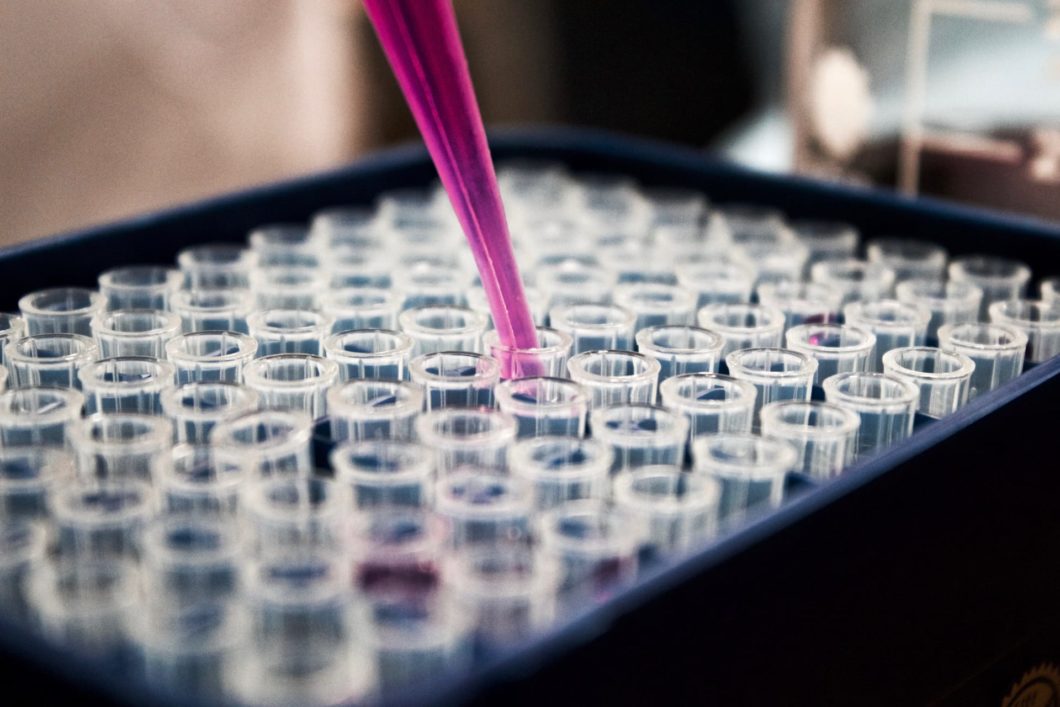Product development • Acesulfame K (E 950) is a fairly unknown sweetener despite being found in a wide range of known foods, including Coca-Cola Zero. But even though it is 200 times sweeter than sugar, it has a bitter aftertaste.
In our series ‘Guide to artificial sweeteners,’ we have come to the anonymous Acesulfame K. It is considered the new generation of high-intensity sweeteners, even though it was invented at the same time as aspartame in the 1960s. It is a chemical substance with a bitter aftertaste that the body is unable to absorb. What are the benefits of this sweetheart, and are there better alternatives?
Acesulfame K, a chemically produced sweetener
Acesulfame K (E 950) is a chemically produced sweetener. It was invented in Germany in 1967 and entered different markets in 1983. It is up to 200 times sweeter than sugar but has a bitter aftertaste. Therefore, it is often used in combination with aspartame, cyclamate and sucralose. There are about 300 manufacturers of Acesulfame K. About 250 of them are located in China.
An agent with many names
Acesulfame K is an abbreviation for acesulfame potassium. It is also called Ace-K or ACK. In Europe, it has the e-number: E 950.
Its chemical spectrum is: ‘6-Methyl-1,2,3-oxathiazin-4(3H)-one 2,2-dioxide potassium salt(55589-62-3) 13C NMR’ and ‘6-Methyl-1,2,3-oxathiazin-4(3H)-one 2,2-dioxide potassium salt(55589-62-3) 1H NMR’. The chemical form is C4H4KNO4S.
It is sold under brand names that are much easier to pronounce, namely Sunett and Sweet One.
Discovered when a brave chemist licked his fingers
Acesulfame K was discovered by chance in 1967 by the chemist Karl Clauss who worked at Hoechst AG. Karl Clauss tried to create a reaction between 2-Butyn and fluorosulfonyl isocyanate. Modern chemists describe it as ‘brave’ to experiment with two such reactive substances, and during the work, he licked his finger to rub away some white powder that was stuck to his shirt. He discovered that the finger tasted sweet.
What he discovered was a chemical category that goes by the name dihydro-oxazines from which various sweet compounds can be found. After further experiments, acesulfame was continued in combination with potassium acetate.
The anecdote about the discovery of Acesulfame K is similar to the discovery of aspartame. There are different versions of who licked what. We can only state that the 60s was a decade when people enjoyed experimenting with different chemicals and licking fingers.

How to make Acesulfame K?
Simply put, it goes like this:
Acesulfame potassium is synthetically produced from acetoacetic acid and fluorosulfonyl isocyanate. It forms a compound which is converted to fluorosulfonyl acetoacetic acid amide, which is then cyclized (a reaction for a part of a molecule similar to another molecule to form a closed ring) with potassium hydroxide to form an oxathiazinone dioxide ring system from which extracts potassium acetate.
An alternative way is to combine diketene with sulfamic acid and a dehydrating agent which removes water by breaking chemical compounds and thus creating a crystallization which is neutralized with potassium hydroxide whereupon acesulfame potassium is formed.
For those who want in-depth information about the manufacturing, we refer to ChemicalBook.
Application
Acesulfame K is used as a sweetener but also as a flavour enhancer that increases sweetness in aspartame, cyclamate or sucralose. You will find Acesulfame K in products as:
-
- Juice, soda, energy drinks, alcohol
- Ice cream
- Jam
- Toothpaste
- Gum
- Yoghurt and other dairy products
- Condiments
- Marinades
- Cereals
And more.
Accepted daily intake (ADI)
For Acesulfame K, it is recommended that we stay below 15 mg per kilogram per day. (Compare with aspartame: 40 mg / kg / day; saccharin: 5 mg / kg / day.) It can be difficult to know how much Acesulfame K each product contains because manufacturers do not have to state the amount.
Benefits
- Acesulfame K is up to 200 times sweeter than sugar.
- It gives no calories.
- It is cheaper than sugar.
- It can withstand heat.
- It is approved as a sweetener.
Disadvantages
- It is a chemical product indeed. There is nothing ‘natural’ about Acesulfame K. This puts Acesulfame K high on lists of ‘dangerous products’ circulating on the internet, even though relevant authorities around the world have approved it.
- The human body cannot break it down. It circulates in the blood until it comes out with the urine. This fact contributes to the connotation of ‘unnatural’ sweetener. It also leads to concerns about environmental impact.
- It has a bitter aftertaste.
Is Acesulfame K dangerous?
When handling Acesulfame K in production, you must wear protective clothing, gloves and goggles. It can be irritating to the skin, eyes and breathing. If it comes in contact with eyes, rinse them with plenty of water and seek medical attention.
For food consumption, it is classified as safe. No warning texts are mandatory on packages. According to the FDA (Federal Drug Administration), there are 90 studies that show that Acesulfame K is safe.
Concerns have been raised that it may be carcinogenic. Critics have called for more studies, but this has been rejected by the FDA and the EFSA (European Food Safety Authority). The National Cancer Institute (NCI) has also concluded that Acesulfame K is harmless in this regard.
Animal studies indicate a potential risk that Acesulfame K may stimulate insulin secretion and lead to reactive hypoglycemia. These studies have used higher doses of Acesulfame K than recommended for humans. In recent years, research has shown the enormous importance of the intestinal flora for our health. In that context, artificial sweeteners appear as a cause of disturbed intestinal flora, which can be linked to chronic low-intensity inflammation and obesity. This is an area of research that will become increasingly important in the future and worth keeping an eye on.
Summary
Acesulfame K (E 950) is a high-intensity sweetener that was discovered by a German chemist in 1967 and began to be used in various countries in 1983. It has a bitter aftertaste. Therefore, it is often used in combination with aspartame, cyclamate or sucralose. The major ‘food agencies’ approve it, and 90 studies show that Acesulfame K is safe. In recent years, the importance of the intestinal flora for our health has become increasingly known, and there are indications that synthetic sweeteners may have a negative impact on the intestinal flora.
Acesulfame K is a relatively unknown ingredient for ordinary consumers but is perceived as far from ‘natural’ and often appears in ‘lists of foods we should avoid’. Partly because the body can not absorb acesulfame K but allows it to circulate in the blood until it comes out the natural way.

Sweet from nature is an alternative
It is exciting to follow the development of artificial sweeteners. It is incredible what can be achieved with modern technology and chemical processes.
There are however other alternatives that are not artificial. These days we have sweeteners of natural origin. This includes steviol glycosides extracted from the sweetleaf, also known as stevia.
In 2011, EFSA approved steviol glycosides as sweeteners following 20 years of research. The food and beverage industry in Europe is increasingly using stevia and the global stevia market is growing annually by more than eight per cent.
Curious about stevia?
Are you curious about stevia and steviol glycosides? We develop stevia extracts for different types of food. Take a look at our range of services or contact us if you want to know more about how we can help you.
Please, share this article if you liked it.
[et_social_share]






